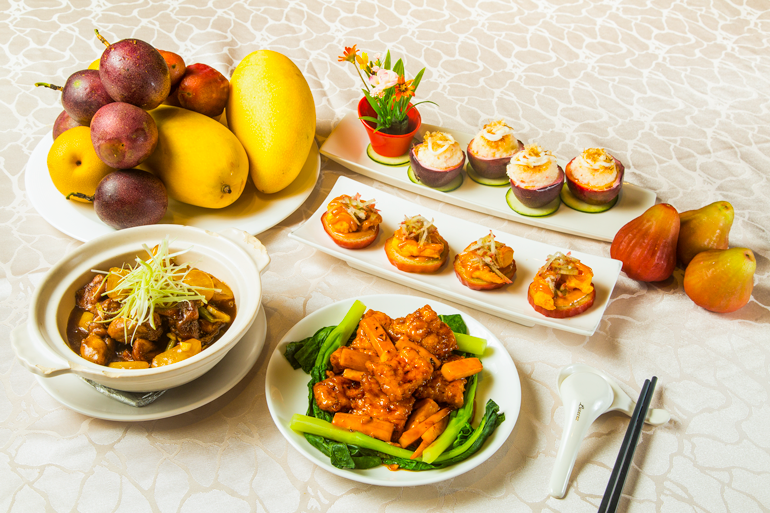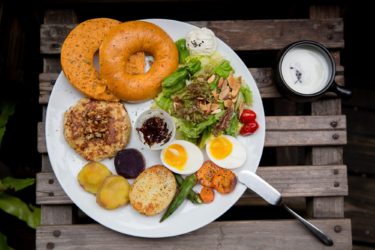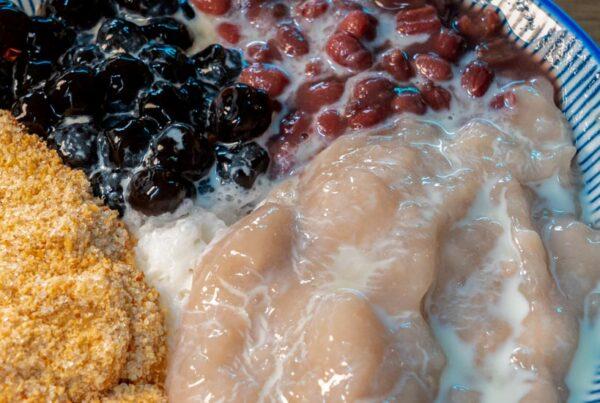Sweet and Juicy with Lots of Flavor
Text: Christian Adams; Photos: Maggie Song, Vision
Purists might argue that fruit should always be eaten fresh and raw, and there are certainly numerous reasons for keeping everything from apples to pineapples in an uncooked or unprocessed state before consumption. Some chefs and artisanal jam producers in Taipei, however, do such a wonderful job of using fruit in their cooked dishes and preserves that even “always eat fruit raw” advocates might find their creations irresistible.
In the world of cuisine, many countries present definitive creations. India has curry. Japan has given us sushi. The U.S. is home of the beefsteak. When I think of France, I think of stinky cheese and red wine. Italy gives me visions of ragu alla bolognese (spaghetti bolognaise).
In the same vein, Taiwan is for me the undisputed king of fruit. Straddling the Tropic of Cancer, the island’s marine climate is exceedingly conducive for agricultural abundance, while the topographical and seasonal influences create a variety of growing conditions. The result is a broad range of fruits, from the mundane to the exotic, including but not limited to:
Avocado, banana, custard apple, dragon fruit, grape, guava, jujube, kumquat, lemon, longan, loquat, lychee, mandarin orange, mango, nectarine, papaya, passion fruit, peach, pear, persimmon, pineapple, plum, pomelo, star fruit, strawberry, watermelon, and wax apple.

Pomelo
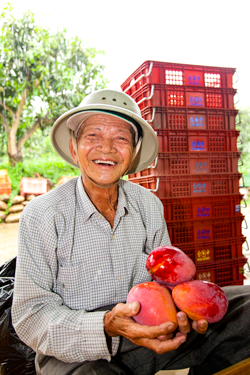
Mango
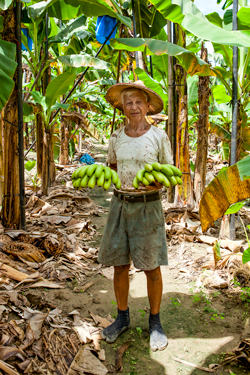
Banana
While fruits such as bananas and muskmelons are grown year-round, with multiple harvests, peak harvest times for other fruits vary. No matter what the time of year, however, there is always some type of fruit being harvested; for example, oranges and strawberries in the winter months, pears and wax apples in spring, mangos and lychees in summer, and pomelos and papayas in autumn. Temperate-zone fruits such as apples, peaches, and pears are grown in high-mountain areas. More exotic fruits such as mangos and custard apples flourish in the tropical south.
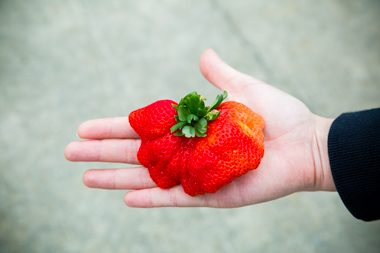
Strawberry

Pomelo
In other words, a lot of fruit is grown in Taiwan, fully justifying its reputation as the “Kingdom of Fruit.” And fruit is everywhere you go, from day markets and supermarkets to juice shops and shaved-ice stalls in night markets to roadside vendors selling their bounty from the back of flatbed trucks.
While fruit is a prevalent aspect of Taiwanese daily life and food culture, it is conspicuously underrepresented at fine-dining establishments. Fortunately, a pair of innovative entities have been shaking up the way Taiwan perceives, and ultimately, consumes its fruit.
Mansui
Mansui is one of the more conveniently situated restaurants in Taipei, approximately 10 steps – I counted – from Exit 8 of MRT Songjiang Nanjing Station (Green and Orange lines). Exit the station, turn left, and you’re quite literally there.
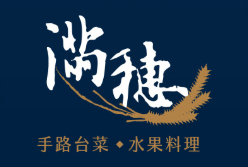 The name Mansui translates as “plump rice,” and symbolizes an abundant harvest. Rice stalks drooping from the weight of their grains are said to resemble the posture of a wise, courteous, and humble man. This is in line with the restaurant owner’s belief that one should remain humble even after having become successful.
The name Mansui translates as “plump rice,” and symbolizes an abundant harvest. Rice stalks drooping from the weight of their grains are said to resemble the posture of a wise, courteous, and humble man. This is in line with the restaurant owner’s belief that one should remain humble even after having become successful.
The restaurant was established in 2013, and Chef Lian Wu-de is the mastermind behind its fruit-forward concept. Seasonal fruits are paired with traditional ingredients in a menu emphasizing fresh seafood and Taiwanese homestyle cuisine. And before you read any further, allow me to say one thing: the results are uncommonly delicious.
On a recent visit to the restaurant with three companions, I had the chance to sit down with Chef Lian and ask him a few questions. He reported that he wants to create dishes that are “less oily and healthier” while emphasizing the freshness of his chosen ingredients, which are strictly local for the most part. His creative interpretation of some fairly common dishes opens a surprising world of flavor variations. While many restaurants offer exotic culinary fusions, Chef Lian makes fruit the star, not merely the garnish.
The restaurant’s interior design is upscale casual, featuring bold red and gold hues. Five private rooms on the B1 level can accommodate up to a total of 120 people. In addition to the English on the menu, an English-speaker will almost surely be among the on-duty staff, so foreign diners need not be concerned about a language barrier.
The front section of Mansui’s extensive menu is partitioned according to the four seasons and the harvest of particular fruits. For example, May~September is mango season, and mango is thus featured in the summer dishes. Page after page, you find fruit-driven flavor combinations that are truly innovative, served in a comfortable and foreigner-friendly atmosphere at reasonable prices.
Mansui’s service is family-style, with dishes placed in the middle of the table, to be shared. Most dishes come in small and large sizes, perfect for couples and/or families.
We tried the four most popular items from the Summer section. To be honest, however, I wanted to order about half the menu. Among the myriad enticing items are the Lobster and Fruit Tarts (NT$720/4 servings) and the Pork Ribs in Plum Sauce (NT$360 for a small order, for 2-3 people/NT$540 for a large order, for 3-4 people). I began to salivate even before the first dishes arrived.
If I had not already known what I was eating, I would have guessed the Shrimp Balls with Wax Apple (NT$480/4) tasted exactly like a peanut butter and jelly sandwich. Crunchy texture, delightfully complex flavor, designed to be eaten in one bite.
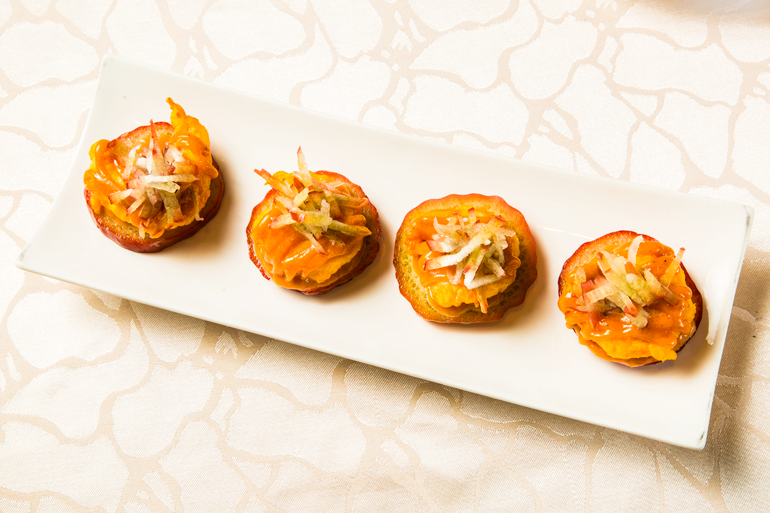
Shrimp Balls with Wax Apple
I marveled at Chef Lian’s ingenuity. I could also have easily gulped down all four portions of the Passion Fruit Crab Salad (NT$320/4). Served in a half-shell, this is a savory, delicately balanced mini-explosion of tangy fruit juice and soft, creamy seafood umami.
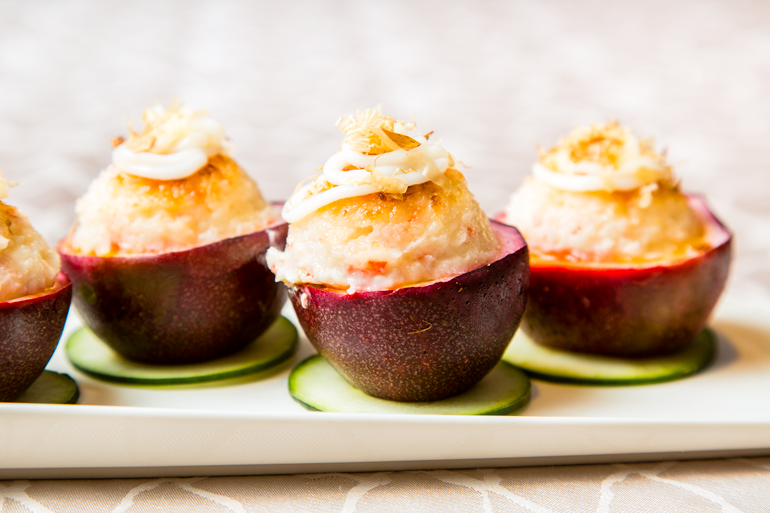
Passion Fruit Crab Salad
The Braised Chicken Leg with Pears (NT$480/$720) features a wonderfully light flavor that is at the same time rich and earthy. This was my favorite of all the dishes.
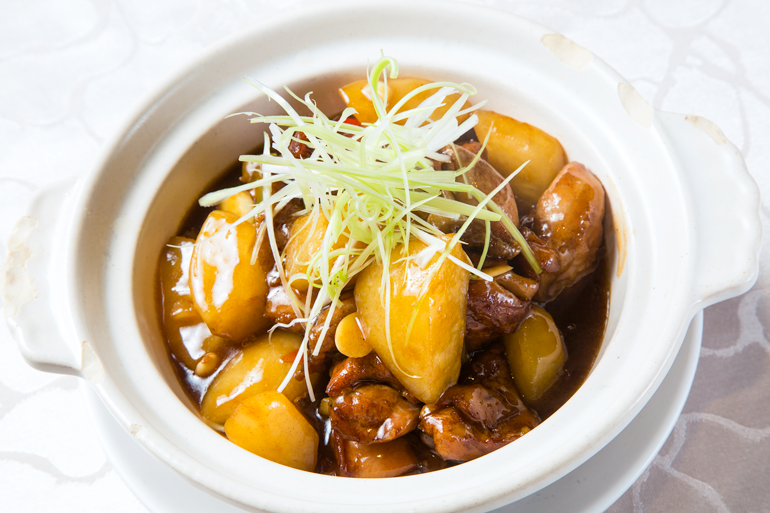
Braised Chicken Leg with Pears
Finally, the Stir-Fried Fish Fillet with Mango (NT$480/$720) was surprisingly light yet smoky, the fish perfectly prepared. This appeared to be the favorite of my dining companions.
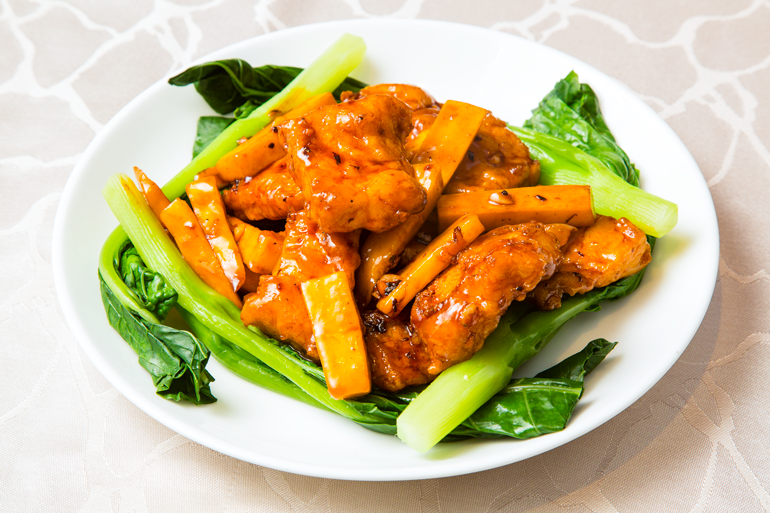
Stir-Fried Fish Fillet with Mango
When our meal appeared to be coming to an end, Chef Lian was kind enough to recommend what I think was the most unusual item on the menu: Fried Bananas with Curry and Bread (NT$380/$570). Let me be as direct as possible, I have never tasted anything quite so unique in my life.
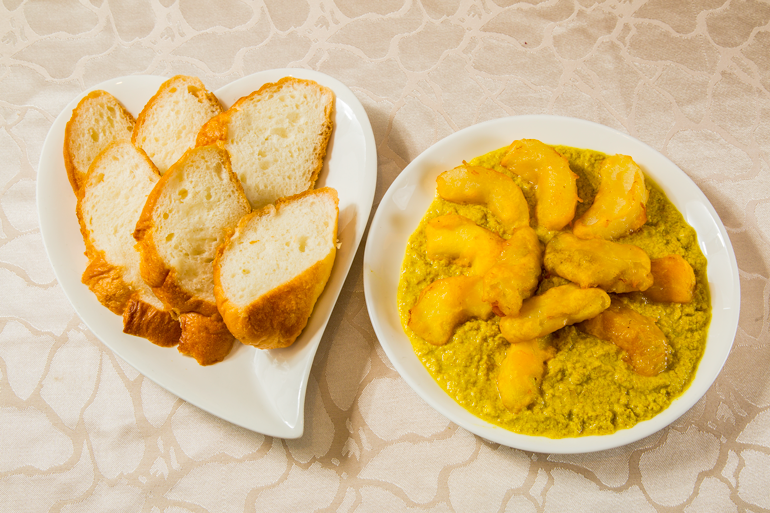
Fried Bananas with Curry and Bread
In conclusion, Mansui Restaurant is highly recommended for both newbie and seasoned diners looking for a fresh, unique experience in Taiwanese cuisine, and I personally can’t wait to go back.
Add: 1F, No. 128, Songjiang Rd., Zhongshan Dist., Taipei City
(台北市中山區松江路128號1樓)
Tel: (02) 2451-2020
Hours: 11:30am ~ 9:30pm
Website: www.mansui.com.tw
Red on Tree
A two-minute walk from Exit 5 of MRT Guting Station (Red and Green lines), Red on Tree is tucked into an unassuming lane off Heping East Road. Upon first glance, it appears to be a modern, stylish, loft-style café that is not unlike countless other coffee and tea vendors in the area around National Taiwan Normal University in Daan District. Once inside, however, it quickly becomes apparent that Red on Tree is anything but common.
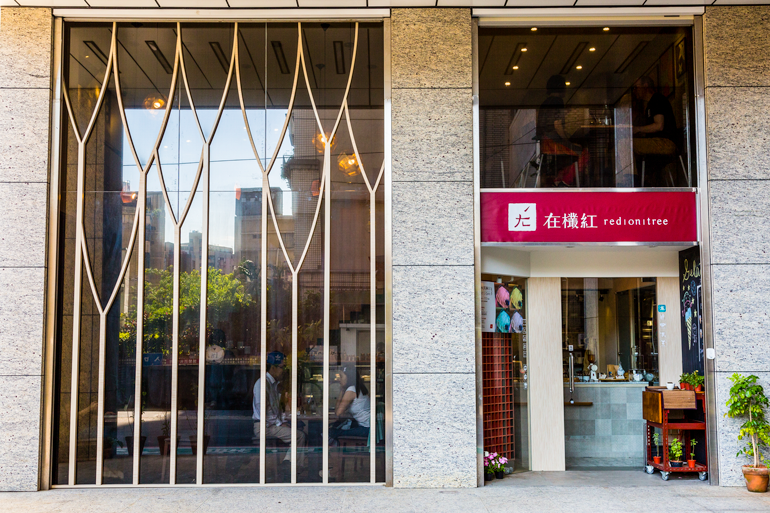
Red on Tree
Self-defined as a “shop,” this space verges on being an indescribable entity. It is at once a café, a patisserie, and a shop for artisan products such as jams, jellies, gelato, desserts, and pâtes de fruit. Such a place is hardly run-of-the-mill in Taipei.
 The name Red on Tree is a translation of the Taiwanese phrase “tsāi-tsâng-âng,” describing the singular essence of fruit harvested at its ripest stage. Most of us – the hoi polloi – never get the chance to eat fruit straight from the vine, because vendors generally buy half-ripe fruit so it doesn’t spoil before hitting the market. Red on Tree’s extraordinary vision is to capture that seminal ripeness of fruit and extend its lifespan as long as possible.
The name Red on Tree is a translation of the Taiwanese phrase “tsāi-tsâng-âng,” describing the singular essence of fruit harvested at its ripest stage. Most of us – the hoi polloi – never get the chance to eat fruit straight from the vine, because vendors generally buy half-ripe fruit so it doesn’t spoil before hitting the market. Red on Tree’s extraordinary vision is to capture that seminal ripeness of fruit and extend its lifespan as long as possible.
Founded in 2008, this unique business is under the direction of Chef Danny Yang, who studied horticulture in college and earned his culinary stripes overseas.
“Our primary goal,” Yang says, “is to present Taiwanese fruit in its purest form, using every available method.” The mandate is implicit; select the best fruits at the most optimal time for harvest.
In step with this artisanal modus operandi, everything from the bread served in the café to the gelato is made at Red on Tree’s central kitchen. While I suppose the term “artisanal” could be interpreted as “purist,” it informs an aesthetic that supersedes a price point. Artisanal products generally aren’t cheap; however, in the case of Red on Tree the uniqueness of the products, combined with the sheer quality, more than justifies the cost to consumers.

Coffee and Lemon Tart
Served on a platter made with a cross-section from a tree, the coffee was presented in a large bowl, accompanied by a shot glass of ice. The idea, manager Grace Huang informed me, is based on the changeability of brewed coffee. By pouring it over ice, the consumer can taste the hot coffee in its freshest-brewed state. It’s very mild, earthy flavor was not unlike a Columbian medium roast.
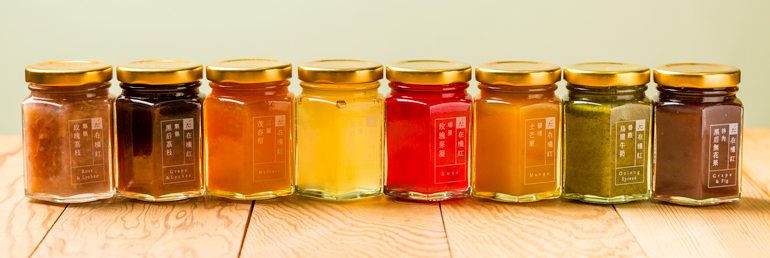
Jam session
My companions arrived, and we began a tasting session led by Grace, an articulate young woman with an impressive knowledge of her products. She led us through the jams, jellies, pâtes de fruit, selected desserts, and gelato, all of which were exceedingly tasty. Additionally, a number of other items on the dessert menu also looked very tempting, particularly the Oolong Tiramisu (NT$150) and the Chocolate Tart with Guava Jam (NT$150), giving me a compelling reason to return!
I didn’t get to taste the Lemon Tart (NT$140), but it looked incredible. The Scones with Jam (NT$100) gave us a chance to sample a number of jams from their extensive repertoire. The Sichuan Pineapple Jam was the crowd favorite, while the Grape and Fig Jam left a lasting impression. Presented in five categories – Classic, Unique, Seasonal, Perennial, and Flower – individual jars of the jams, jellies, and fruit preserves cost NT$230-$380.
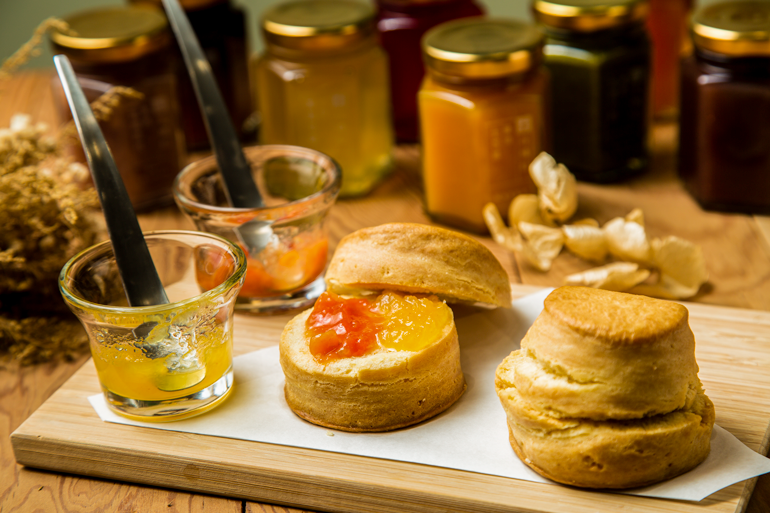
Scones with jam
We also sampled the Sichuan Pineapple Jam Drink (NT$120), a sparkling beverage that looked not unlike lemonade but had a complex, smooth effervescence, with just a teeny-tiny spicy kick. It was truly enchanting, and a perfect thirst quencher on a hot summer afternoon.
Like most people, I have my preferences with food. However, I’m always willing to give something previously rejected another shot. Among the handful of foods that I don’t like is lychee – it tastes like air freshener to me. So, when Grace brought out the Grape and Lychee Jam, I said (to myself, of course), “OK, show me what you’ve got. Make me like lychee.” And sure enough, I ended up thinking that it was utterly scrumptious.
One of the coolest things about the jellies and jams menu is the accompanying tasting notes and pairing recommendations. For example, the Strawberry Jam (NT$350) is said to pair nicely with beef, yogurt, dark chocolate, and champagne. In addition to soft drinks, the Sichuan Pepper-Pineapple Jam (NT$280) is said to pair well with cheese, chicken, and pork. The Peach Gelato (NT$90 per scoop) was everything you might ever want in a gelato. I could taste ridiculously fresh peach, and nothing but peach.
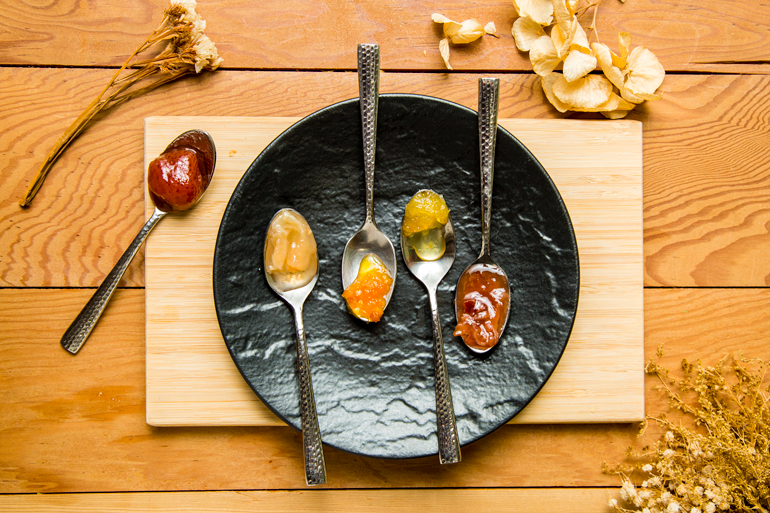
Assorted jams
Finally, we tasted the Pâte de Fruit (NT$350) selection, an assortment of the brightly-hued chewy treats introduced by French confiseurs. While leaning heavily to the sweeter side of the flavor spectrum, the fruit flavors were unmistakably intense and satisfying.
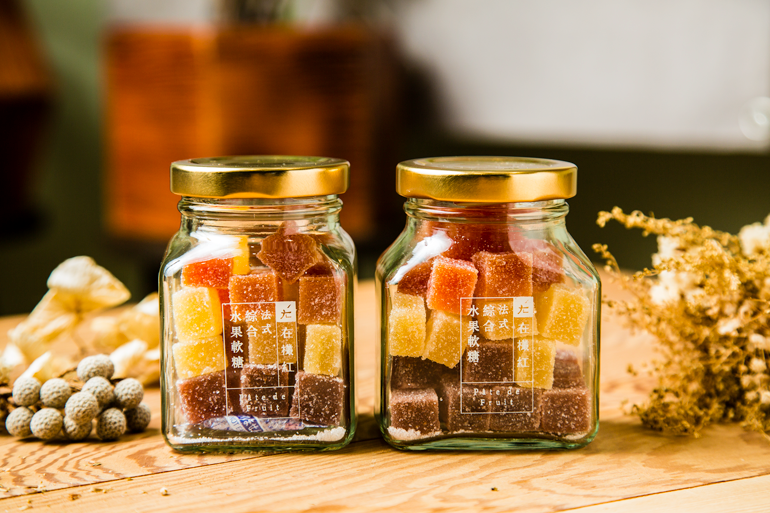
Pâte de Fruit
While Red on Tree might be said to be somewhat of a highbrow experience, it’s one that comes with an educational twist and a very sweet payoff – no pun intended.
Add: No. 3, Ln. 75, Sec. 1, Heping E. Rd., Daan Dist., Taipei City
(台北市大安區和平東路一段75巷3號)
Website: redontree.cyberbiz.co
Hours: 12:30pm ~ 8pm
Tel: (02) 2391-2978
8 Hot Taipei ICE CREAM Parlors

taiwaneverything.cc/2017/07/18/taipei-ice-cream/
Taipei BREAKFAST Options
Find more information about food and coffee places here:
Taipei Cafe and Restaurant Directory by astylealike
About the author
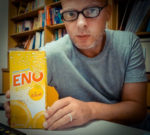
Christian Adams
In 2008, Christian came to Taiwan from San Francisco with two words of Mandarin (ni hao), a laptop, and a suitcase full of clothing that turned out to be completely inappropriate for the sub-tropical climate. An insatiable and life-long traveler, he spent the next decade exploring Taiwan and a good deal of East Asia, usually writing about it, and always grateful for the experience. Christian is currently the editor of an educational publishing company in Taipei, and a freelance writer whose works focus on travel, music, culture, and language. He also maintains a residence in Makati, Philippines, with his wife and son.

